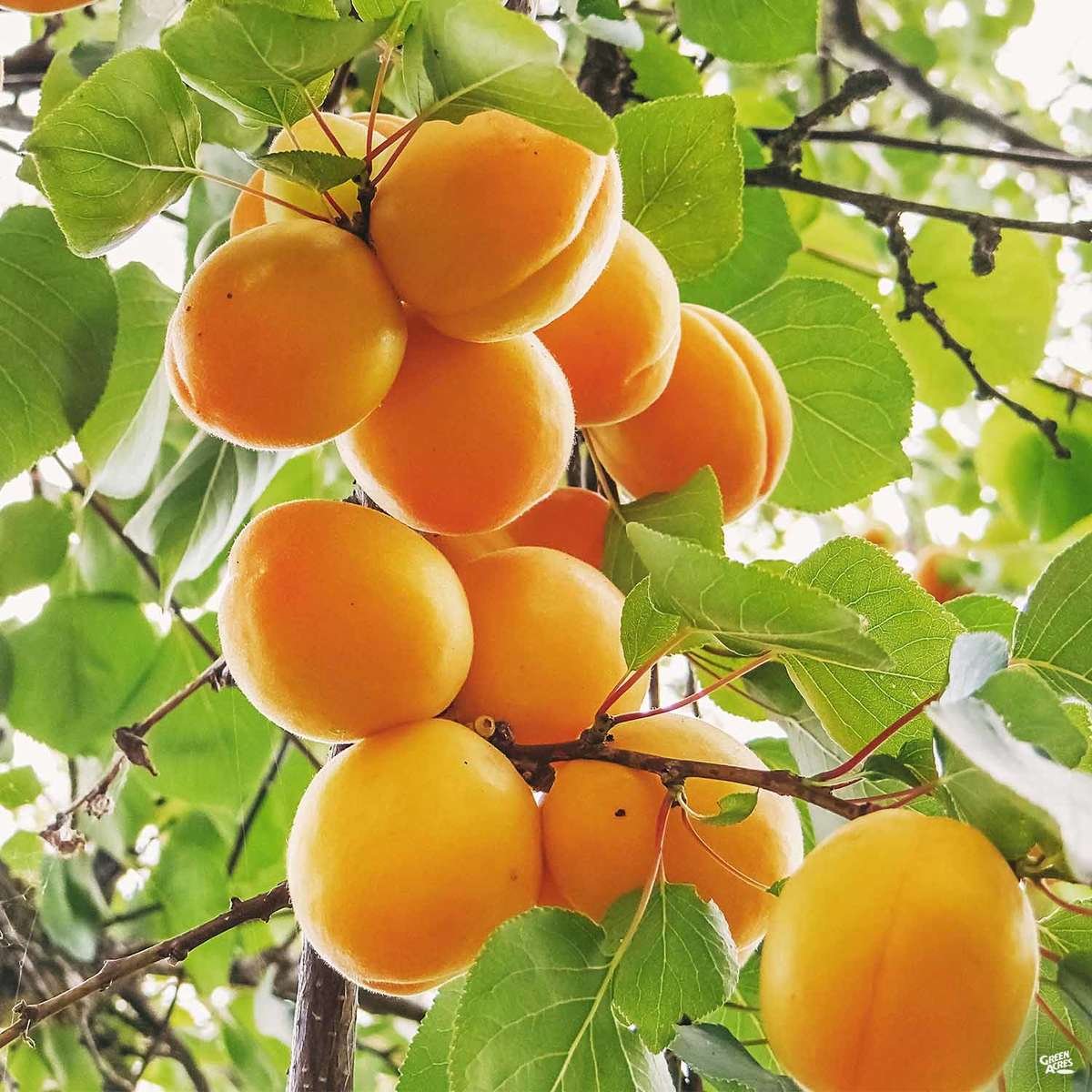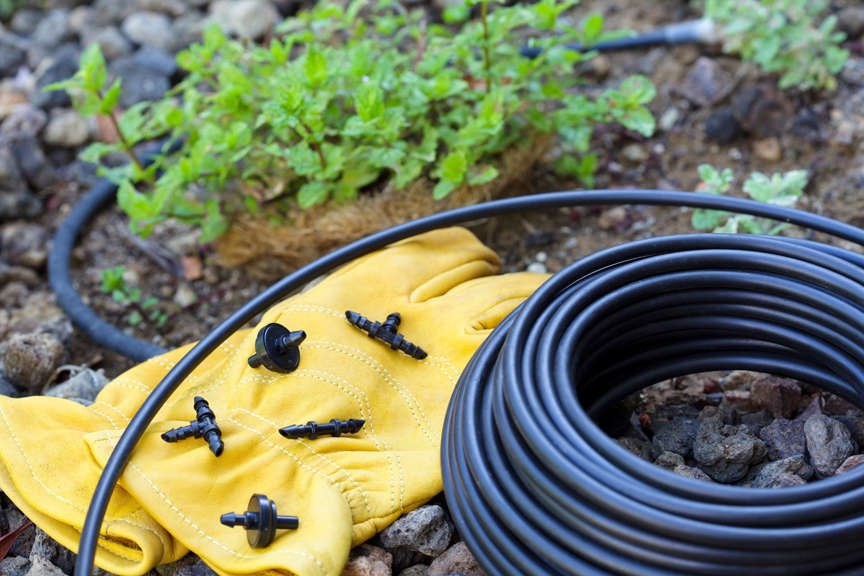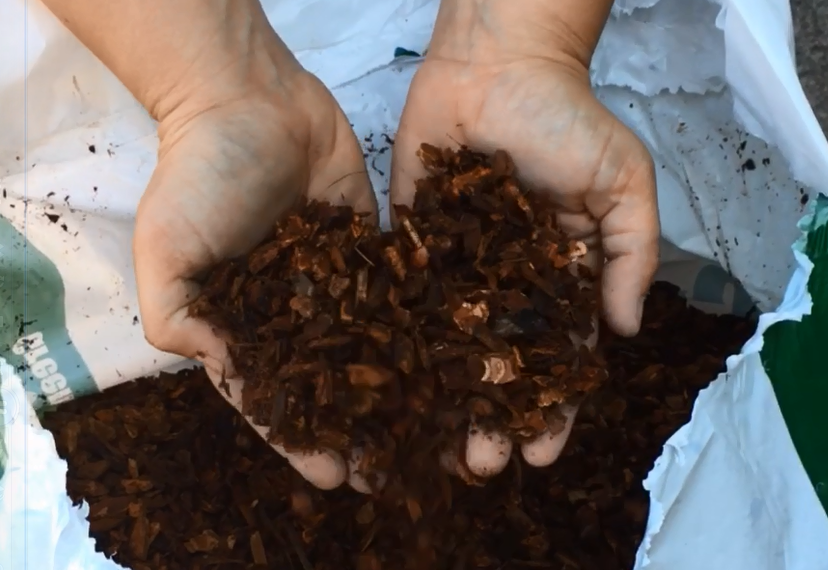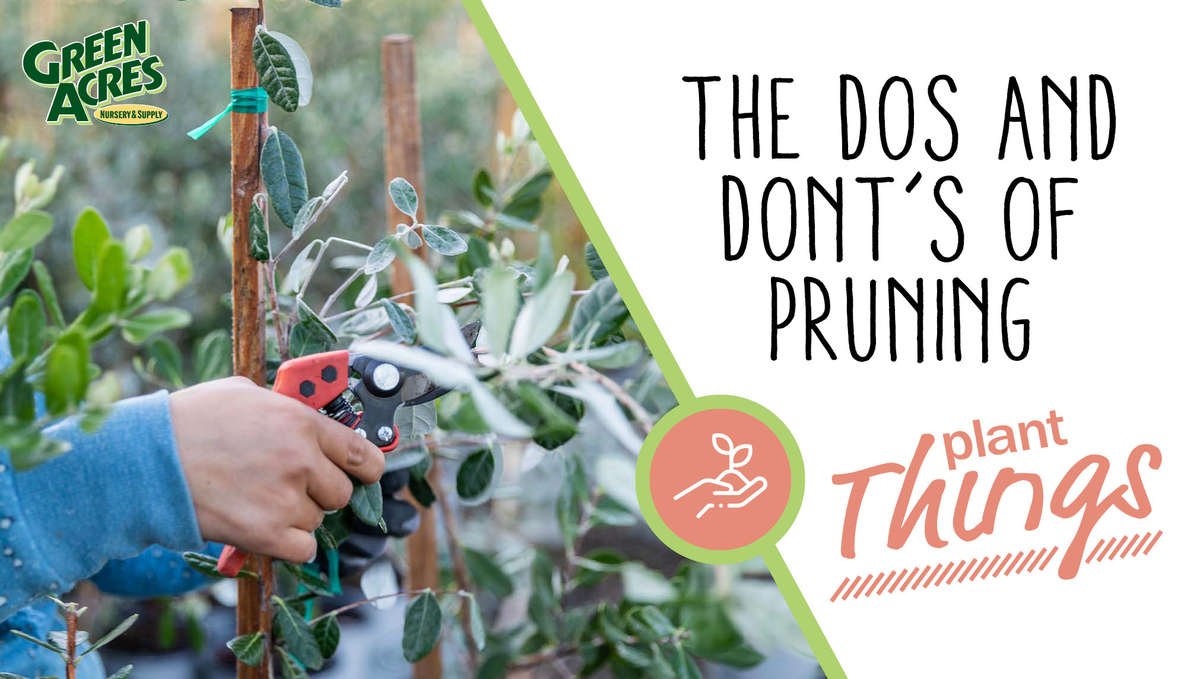
Success with Fruit Trees

Tips To Grow A Bumper Crop
There is something very satisfying about planting a tree and nurturing it to produce delicious, fresh fruit. We all want fruit trees that thrive and provide enough fruit to share with family, friends, and the entire neighborhood—and the way in which we water, fertilize, prune, and thin will influence how much the tree produces each year. Our garden gurus are here to provide the right advice for new and established fruit trees to get that bumper crop year after year.
Drip Irrigation & Fertilizers
Did you know that drip irrigation increases fruit yields? Sprinkler water hitting tree trunks leads to damaged bark and increased rates of disease, which will in turn reduce the amount of fruit your tree will produce. Switch to drip irrigation wherever possible because it applies water slowly, directly to the base of the plant, so there is less evaporation than sprinklers.
Fruit production increases when we add water and fertilizer to the soil under the outer reaches of the branches. Water and fertilizer near the trunk can reduce fruit production to nearly zero. For potted trees, be sure to add fertilizer around the whole pot, not just in one spot.
Choose organic fertilizers for growth that favors both the tree and fruit production. Synthetics push too much green growth, too fast, and can radically reduce your bumper crop.

Switch to drip irrigation wherever possible because it applies water slowly, directly to the base of the plant, so there is less evaporation than sprinklers.
Protect Your Investment
Protect young trunks from sunburn by painting with tree-safe paint. Young trees without a large canopy can’t protect tender, sensitive trunks from our hot Mediterranean summers. And, trees with softer trunks, such as cherries, really need this protection.
Remember to tend to your soil with mulch. By keeping the sun off of the soil, mulch is a powerhouse that provides for your plants’ long term health and vigor. Mulch protects root zones, slows the evaporation of water, and suppresses weeds. Mulch also creates the welcoming environment for beneficial insects and bacteria, keeping your soil happy. Happy soil equals happy plants.
Remember to tend to your soil with mulch. By keeping the sun off of the soil, mulch is a powerhouse that provides for your plants’ long term health and vigor. Mulch protects root zones, slows the evaporation of water, and suppresses weeds. Mulch also creates the welcoming environment for beneficial insects and bacteria, keeping your soil happy. Happy soil equals happy plants.

Mulch protects root zones, slows the evaporation of water, and suppresses weeds.
The Early Years & Beyond
To get years of dependable fruit, there is one very hard job to do the first year: cut off any fruit before it matures during the first year. Dedicate the first year to root zones and branch strength, not fruit. Year two is when we can have some fruit mature on the tree, and every year after that the tree will support increasing amounts of fruit until you have more than you know what to do with.
For decades, we've pruned our fruit trees only once, and in winter. New advances in pruning ask us to prune more than once each year and to keep the tree short. Shorter trees are easier to protect from birds and others who want to steal our hard-earned fruit.
Modern fruit trees are meant to produce as much fruit as possible, and often we need to thin out some of that fruit because overcrowding leads to smaller, unhealthy fruit. Even established tree branches can’t support a full load of fruit, and may crack or break. Thin the fruit when it is about the size of a golf ball, sometimes thinning by as much as half.
For decades, we've pruned our fruit trees only once, and in winter. New advances in pruning ask us to prune more than once each year and to keep the tree short. Shorter trees are easier to protect from birds and others who want to steal our hard-earned fruit.
Modern fruit trees are meant to produce as much fruit as possible, and often we need to thin out some of that fruit because overcrowding leads to smaller, unhealthy fruit. Even established tree branches can’t support a full load of fruit, and may crack or break. Thin the fruit when it is about the size of a golf ball, sometimes thinning by as much as half.

